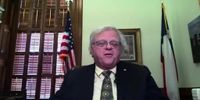In a significant legislative move, North Dakota lawmakers passed House Bill 1259 on March 23, 2025, which would keep the state on standard time all year long, eliminating the biannual clock change that has frustrated many. While this change may seem beneficial to those weary of adjusting their clocks twice a year, it raises concerns about how it will impact daily life, particularly in relation to sunlight hours.
The bill stipulates that both Central and Mountain time zones in North Dakota would remain on standard time permanently. Supporters argue it will remove the stress of adjusting schedules every spring and fall. However, as one local observer noted, "Staying on standard time year-round would come at a cost: losing one of North Dakota’s greatest assets, sunlight." Such sentiments reflect a concern that summer evenings could start as much as an hour earlier, thus diminishing the long nights that many residents enjoy.
The shift aligns with federal regulations that allow states to opt out of daylight saving time. This legislative change aims to simplify the lives of North Dakotans, streamlining schedules for families and individuals who often struggle to readjust after the time changes. However, it also removes an existing state law regulating daylight saving time.
The discussion surrounding the merits of this bill is not unique to North Dakota; it mirrors broader debates occurring across the United States and the world regarding daylight saving time. For instance, on March 29, 2025, clocks will once again move forward one hour in various regions, igniting the usual controversies associated with this tradition. While the rationale for the time change dates back to World War I when Germany first instituted it to conserve energy during wartime, many argue that it has lost its relevance in today's society.
Opponents of daylight saving time point to numerous studies indicating that the practice can disrupt natural circadian rhythms and is linked to various health issues, including an increased risk of heart disease and metabolic syndrome. The American Academy of Sleep Medicine posits that adopting permanent standard time would yield more benefits for public health by avoiding sleeping issues tied to the clock change.
Despite these concerns, there remains a lack of political consensus on abolishing daylight saving time altogether. As noted in various reports, "Currently, there is no political consensus on the issue, and the economic facts are inconclusive." Some favor sticking with daylight saving time for the perceived economic benefits, arguing that longer daylight in the evenings can lead to increased retail hours and consumer spending. The different preferences reflect divides in public opinion, with some supporting more daylight during evening hours while others advocate for the health benefits associated with retaining standard time.
Public polls indicate that a majority of both Americans and Europeans oppose the seasonal clock change. The difficulty lies in determining which time to maintain permanently—daylight saving time is favored by retailers for its potential to boost shopping hours, while those in the medical community assert that standard time would be the healthier option.
A chilling statistic emerges from a 2018 meta-analysis of studies focused on energy savings associated with daylight saving time, showing that adjustments yield only about a 0.34 percent reduction in energy use. Furthermore, recent research suggests that the benefits might not be as substantial as previously thought, especially in light of technological advancements like LED lighting that reduce the reliance on artificial light.
As North Dakota embarks on this legislative change by deciding to stay on standard time year-round, the decision echoes a wider societal struggle over the relevance and efficacy of daylight saving time. Citizens are faced with the age-old question of losing or gaining an hour and how that impacts their quality of life.
In the larger narrative, the push for permanent standard time reflects a desire for stability and consistency amidst a world that continually changes. Whether other states will follow North Dakota’s lead remains uncertain, but the debate surrounding daylight saving time will undoubtedly persist as communities grapple with the impacts on work, health, and leisure.
As the clock ticks toward the next change on March 29, the discussions will likely intensify, forcing society to reconsider the implications of rhythm, time, and the choices that shape daily lives.







